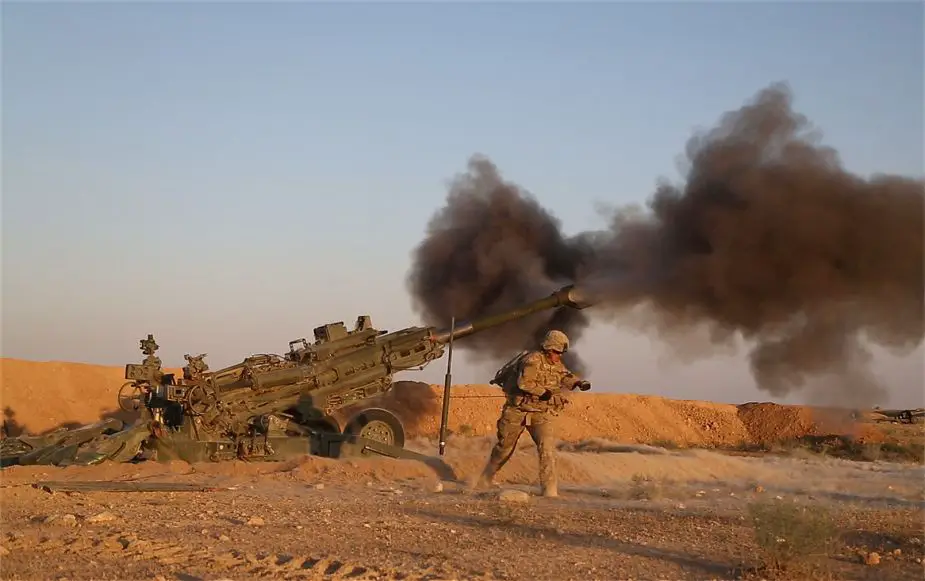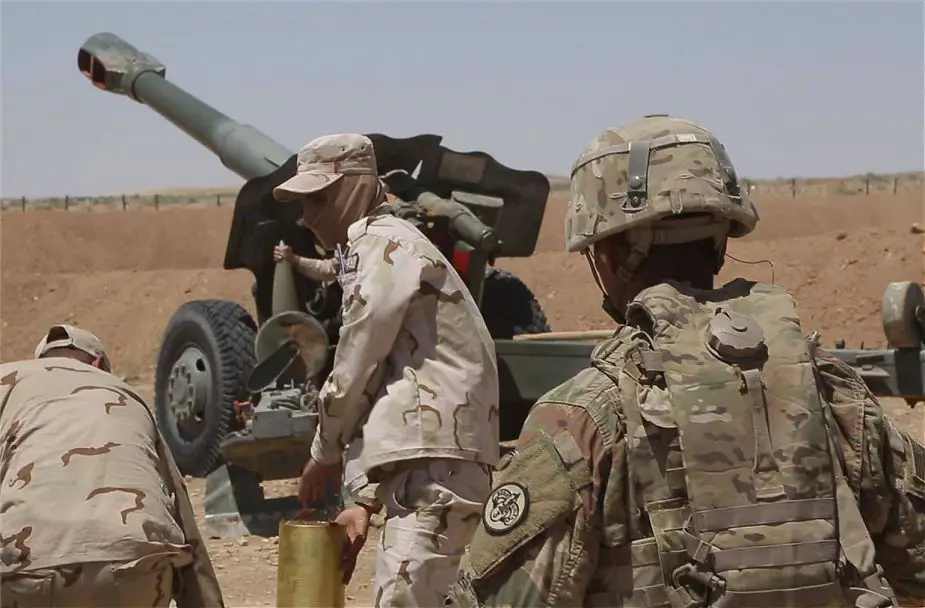Iraqi Security Forces, alongside troopers from the 3rd Cavalry Regiment "Brave Rifles" and Marines and sailors from other units of Combined Joint Task Force - Operation Inherent Resolve, arrived weeks ago to establish the temporary fire support base in northwestern Iraq, along the Syrian border.

U.S. Army Soldiers with the 3rd Cavalry Regiment fire artillery alongside Iraqi Security Force artillery at known ISIS locations near the Iraqi-Syrian border, June 5, 2018 (Picture source U.S. MoD)
Their mission - provide supporting fires to forces participating in Operation Roundup, the operation to defeat the last pockets of ISIS from northeastern Syria. This required close coordination to synchronize fires from multiple weapon systems.
Iraqi and U.S. gun crews and fire direction centers developed a common technical language to coordinate fire missions and overcame any multinational language barriers. This mission required the use of multiple communications systems and the translation of fire commands, at the firing point, directing the Iraqi Army guns to prepare for the mission, load and report, and ultimately fire.
The U.S. troops use the M777 the ultra light howitzer designed and manufactured by BAE Systems, while the Iraqi army artillery unit is equipped with the Soviet-made 152 mm gun-howitzer M1955, also known as the D-20. The D20 howitzer unit used different procedures to calculate the firing data, which is the information required to determine the correct flight path to achieve effects on the desired target.
The M777 is normally operated by a crew of eight men but can be operated with a reduced detachment of five. It uses a digital fire-control system similar to that found on self-propelled howitzers such as the M109A6 Paladin to provide navigation, pointing and self-location, allowing it to be put into action quickly.
The M777 has a maximum firing range of 24.7 km with standard rounds and 30 km with EFRB (Extended Range Full Bore) rounds. It can also fire the M982 Excalibur GPS-guided munitions, which allows accurate fire at a range of up to 40 km.

A US soldier from the 3rd Cavalry Regiment observes the Iraqi Security Forces as they fire with D-20 152mm towed howitzer at known ISIS locations near the Iraqi-Syrian border, June 19, 2018. (Picture source U.S. MoD)
The 152 mm gun-howitzer M1955, also known as the D-20, is a 152mm towed artillery howitzer, manufactured in the Soviet Union during the 1950s. The D-20 has a 34 caliber barrel, with a double baffle muzzle brake and a semi-automatic vertical sliding-block breech, with a tied jaw and the block moving down to open.
The D-20 uses two types of cartridge; one has a base charge and up to five increments, the other is a single 'super' charge cartridge. The standard shell weight is 44 kg with a muzzle velocity of 655 m/s, but some projectiles are more or less than this. The basic shell is HE-Fragmentation; other projectiles include smoke, illuminating, chemical and probably incendiary. Later projectiles include bomblet, anti-personnel mine, flechette, Krasnopol precision munitions, communications jammer, and extended range HE using rocket assistance (RAP). The normally maximum range is 17.4 km, RAP being greater. Two direct-fire anti-tank projectiles have been used, HEAT and APHE, the latter being 5.2 kg heavier and with a lower muzzle velocity.
The D-20 is operate by a crew of 10 and can be ready to fire in less than 3 minutes from traveling position.
Coalition forces and Iraqi partners worked with Brave Rifles engineer teams to establish a secure perimeter providing stand-off and protection for the U.S. and Iraqi artillery units. Working side-by-side, Iraqi and U.S. artillerymen depend on each other to achieve mission success.
The remote fire base is temporary and expeditionary, absent any permanent structures and exposed to summer desert temperatures well above 100 degrees Fahrenheit or 38 degrees Celsius.















